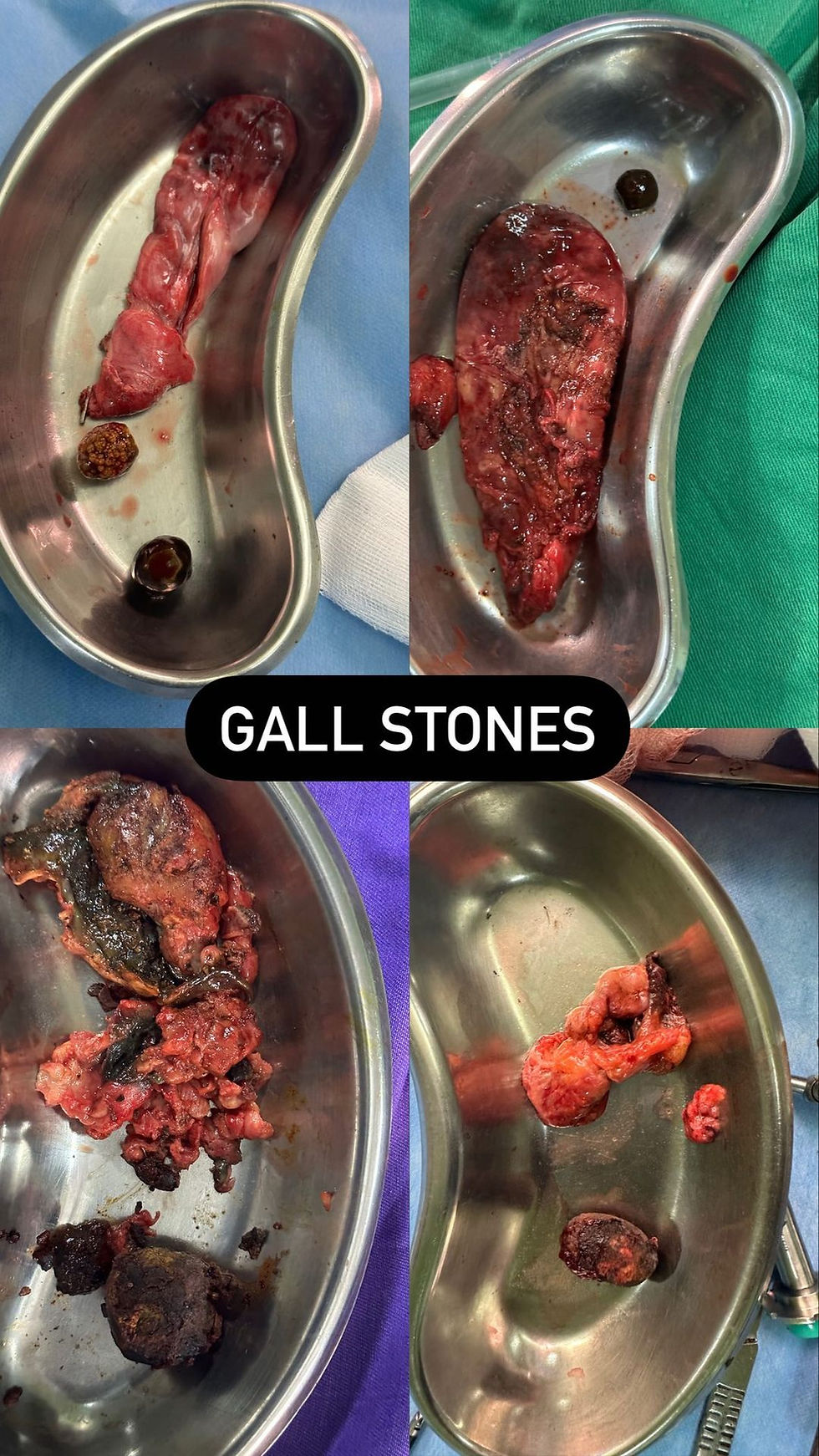What is Minimally invasive surgery and how it can improve your surgical experience?
- Abhilash Kumar
- Jun 24, 2024
- 1 min read
Minimally invasive surgery offers several advantages over traditional open surgery, including reduced pain, shorter hospital stays, and fewer complications. Let’s delve into two key techniques: laparoscopic surgery and robotic surgery.
Laparoscopic Surgery:
Definition: Laparoscopy involves making small incisions in the abdomen through which a camera and surgical instruments are inserted.
Procedure:
Surgeons use small tubes and tiny cameras to visualize the surgical site.
The procedure is performed with precision using specialized instruments.
Applications:
Cholecystectomy: Removal of the gallbladder to relieve pain caused by gallstones.
Colectomy: Removal of unhealthy parts of the colon.
Appendectomy: Treatment for acute appendicitis.
Hernia: Repair of groin and ventral hernias
Benefits:
Faster recovery.
Minimal scarring.
Reduced risk of infection.
Less postoperative pain.
Robotic Surgery:
Definition: Robotic surgery utilizes a robotic system (such as the Da Vinci system) controlled by the surgeon.
Procedure:
The surgeon operates from a console, manipulating robotic arms with high precision.
The system provides an enlarged, 3D view of the surgical site.
Applications:
Colorectal Surgery: Treating conditions like inflammatory bowel disease.
Gynecologic Surgery: Procedures like hysterectomy and myomectomy.
Hernia & AWR Surgery: Including various groin hernias, ventral hernias with abdominal wall reconstruction.
Benefits:
Enhanced visualization.
Reduced blood loss.
Shorter hospital stays.
Quicker return to normal activities.
In summary, both laparoscopic and robotic techniques offer patients less invasive options for abdominal surgeries, improving outcomes and quality of life. If you’re considering surgery, discuss these approaches with your surgeon to determine the best option for your specific condition. 🌟










Comments